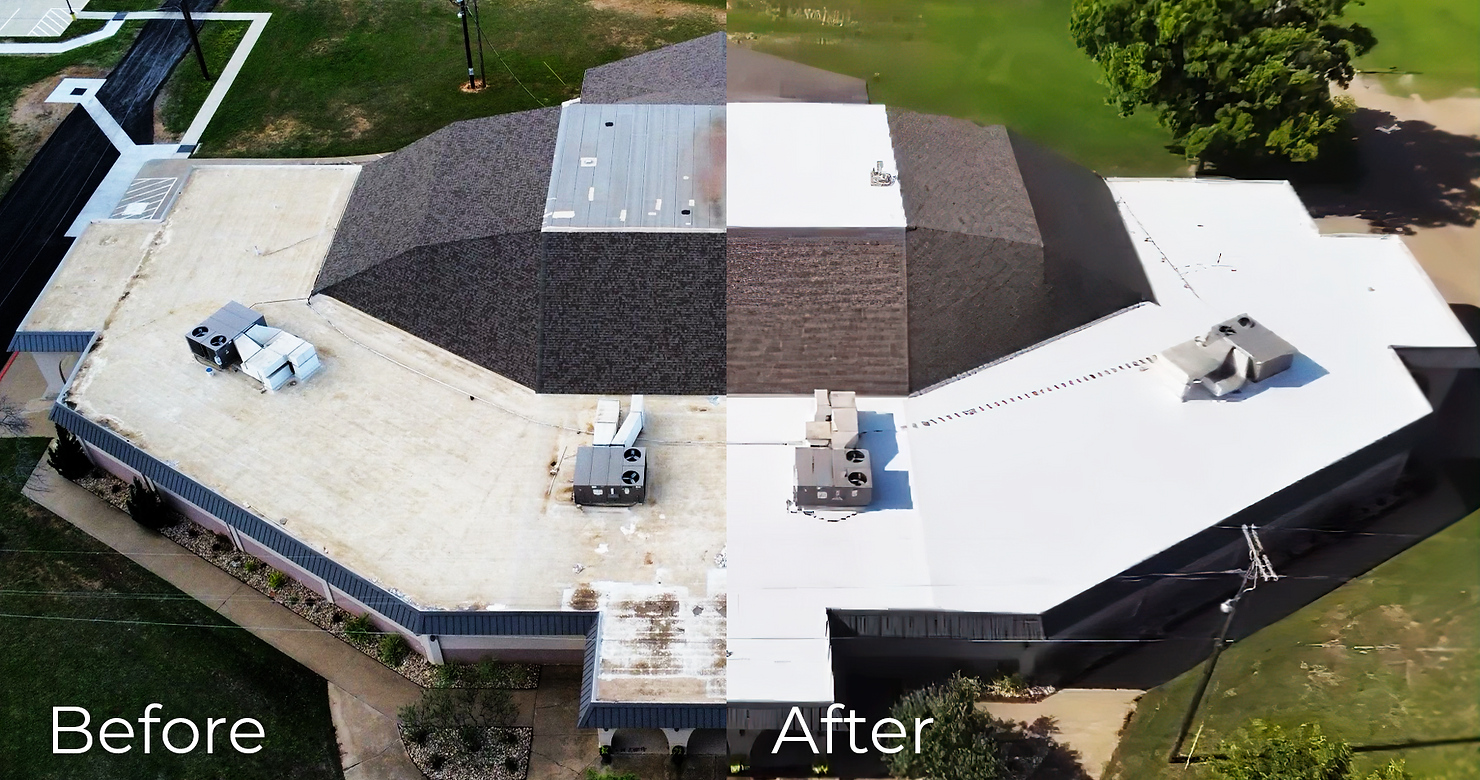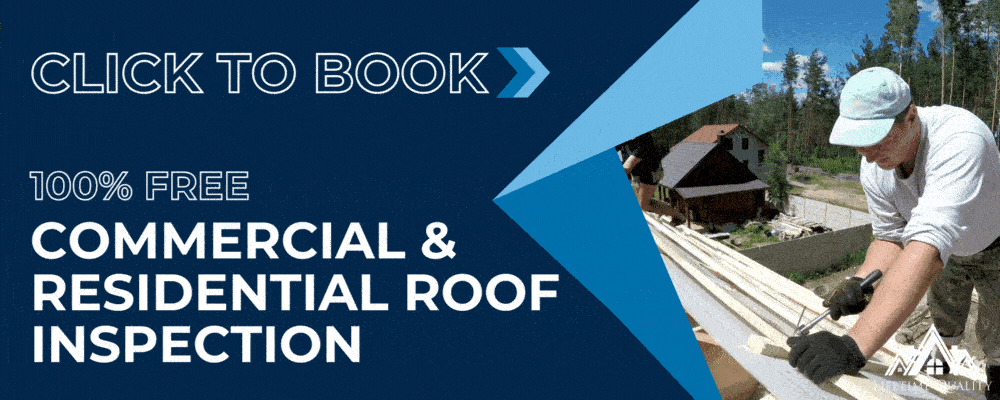
A Guide to Detecting Subtle and Serious Roof Damage Before It’s Too Late
Don't let roof damage go unnoticed. Learn the signs and prevent costly repairs. Protect your home with our expert advice …

Are you wondering what sets a residential roof apart from a commercial one? Look no further. In this article, we will explore the key differences between these two types of roofs, so you can make informed decisions when it comes to roofing projects.
Residential roofs are designed for individual homes and need to meet the specific needs of homeowners. They are typically made of materials such as asphalt shingles, wood, or metal. These roofs are usually sloped to allow for water drainage and to enhance the overall aesthetic appeal of the home. Residential roofs are also smaller in size compared to commercial roofs, as they only need to cover a single-family dwelling.
On the other hand, commercial roofs are larger and used for businesses or industrial buildings. They are often flat or have a low slope to accommodate the installation of HVAC units and other equipment. The size and design of commercial roofs make them ideal for supporting the weight of these systems. The construction of commercial roofs also takes into consideration the need for easy access for maintenance and repairs, as well as the integration of additional features such as skylights or solar panels.
When it comes to residential roofs, there is a wide range of materials to choose from Asphalt shingles are the most popular choice due to their affordability, durability, and ease of installation. These shingles come in various colors and styles, allowing homeowners to achieve the desired look for their homes. Wood shakes and shingles are another option, providing a natural and rustic appearance. However, they require more maintenance and are prone to fire risks. Metal roofs, such as steel or aluminum, offer excellent durability and energy efficiency. They can mimic the look of traditional roofing materials while providing superior protection against the elements.
Commercial roofs require different materials to ensure longevity and functionality. One common material used is Ethylene Propylene Diene Monomer (EPDM), a synthetic rubber roofing membrane. EPDM is highly durable, resistant to UV rays, and provides excellent waterproofing properties. Thermoplastic Olefin (TPO) is another popular choice for commercial roofs. It is a single-ply membrane that offers high reflectivity, energy efficiency, and resistance to punctures and chemical damage. Polyvinyl Chloride (PVC) roofs are known for their exceptional durability and fire resistance. They are often used in areas with extreme weather conditions or where chemical exposure is a concern.

Residential roofs prioritize aesthetics, curb appeal, and protecting the occupants. The design of a residential roof often considers the architectural style of the home, local climate conditions, and the homeowner's preferences. The slope and shape of the roof are carefully planned to ensure proper water drainage and to prevent leaks. Residential roofs also take into account the installation of vents, chimneys, and other components that are essential for the overall functionality of the home.
Commercial roofs focus more on functionality, energy efficiency, and accommodating HVAC and other equipment. The design of a commercial roof often takes into consideration the specific needs of the business or industry it serves. Flat or low-slope roofs are commonly used to provide space for equipment installation and maintenance. These roofs are also designed to handle heavy foot traffic for inspections and repairs. Commercial roofs may incorporate insulation and reflective coatings to improve energy efficiency and reduce heating and cooling costs.
Installing a residential roof involves several steps to ensure proper performance and longevity. The process typically begins with the removal of the old roof, followed by the installation of underlayment and flashing to prevent water penetration. The next step is the placement of the roofing material, whether it's asphalt shingles, wood, or metal. Each material requires specific installation techniques, such as nailing or interlocking. Finally, the roof is inspected for any defects or areas that may require additional attention.
The installation process for commercial roofs is more complex due to their larger size and additional considerations. The first step is the preparation of the roof deck, which involves checking for structural integrity and making any necessary repairs. Next, a vapor barrier or insulation layer may be installed to enhance energy efficiency. The roofing material, whether it's EPDM, TPO, or PVC, is then applied in large sheets or rolls and adhered or mechanically fastened to the roof deck. Flashing and other accessories are installed to ensure proper waterproofing and protect vulnerable areas. Finally, the roof is inspected to ensure that all components are correctly installed and meet industry standards.
Regular maintenance is essential to prolong the lifespan of a residential roof. Homeowners should inspect their roofs at least once a year for any signs of damage, such as missing or damaged shingles, leaks, or clogged gutters. It's important to promptly address any issues to prevent further damage and costly repairs. Regular cleaning to remove debris and moss is also recommended. When repairs are needed, it's best to hire a professional roofing contractor who can assess the damage and provide appropriate solutions.
Commercial roofs also require regular maintenance to ensure their longevity and performance. Routine inspections should be conducted by trained professionals to identify any potential issues. These inspections may involve checking for membrane damage, loose flashing, or clogged drains. Regular cleaning and removal of debris are crucial to prevent water pooling and damage to the roof.
Commercial roofs may also benefit from periodic roof coatings or sealants to enhance their durability and waterproofing properties. When repairs are necessary, it's crucial to hire experienced commercial roofing contractors who have the skills and expertise to handle the unique challenges of commercial roofs.
Understanding the differences between residential and commercial roofs is crucial when planning for a new roof or conducting maintenance and repairs. By considering the specific needs and characteristics of each type, you can make informed decisions that ensure the long-term performance and protection of your property. Whether you are a homeowner or a business owner, investing in a well-designed and properly maintained roof is essential for the safety, comfort, and value of your building.
Contact Lifetime Quality today to book your 100% free residential or commercial roof inspection!